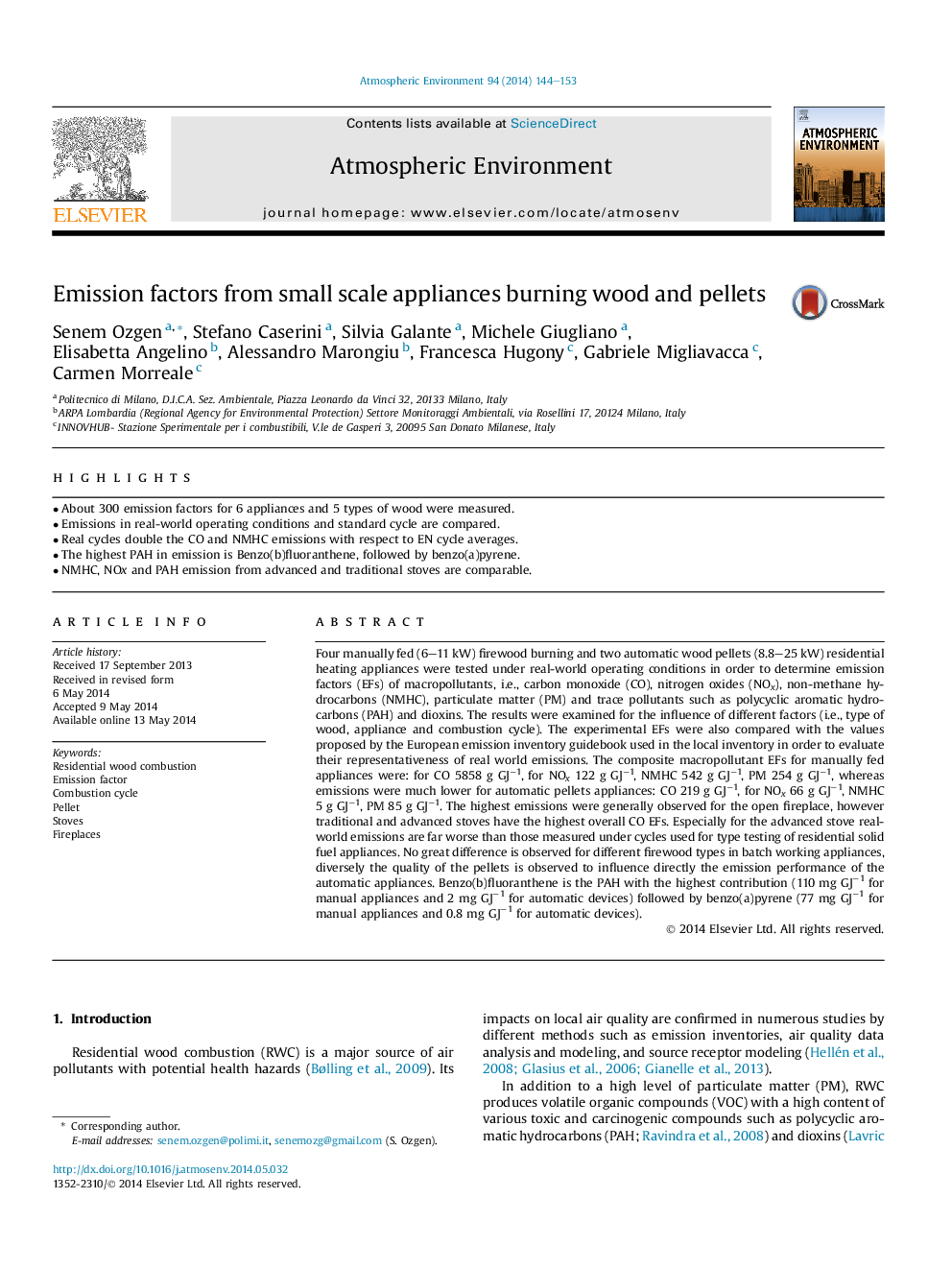| Article ID | Journal | Published Year | Pages | File Type |
|---|---|---|---|---|
| 6339536 | Atmospheric Environment | 2014 | 10 Pages |
Abstract
Four manually fed (6-11 kW) firewood burning and two automatic wood pellets (8.8-25 kW) residential heating appliances were tested under real-world operating conditions in order to determine emission factors (EFs) of macropollutants, i.e., carbon monoxide (CO), nitrogen oxides (NOx), non-methane hydrocarbons (NMHC), particulate matter (PM) and trace pollutants such as polycyclic aromatic hydrocarbons (PAH) and dioxins. The results were examined for the influence of different factors (i.e., type of wood, appliance and combustion cycle). The experimental EFs were also compared with the values proposed by the European emission inventory guidebook used in the local inventory in order to evaluate their representativeness of real world emissions. The composite macropollutant EFs for manually fed appliances were: for CO 5858 g GJâ1, for NOx 122 g GJâ1, NMHC 542 g GJâ1, PM 254 g GJâ1, whereas emissions were much lower for automatic pellets appliances: CO 219 g GJâ1, for NOx 66 g GJâ1, NMHC 5 g GJâ1, PM 85 g GJâ1. The highest emissions were generally observed for the open fireplace, however traditional and advanced stoves have the highest overall CO EFs. Especially for the advanced stove real-world emissions are far worse than those measured under cycles used for type testing of residential solid fuel appliances. No great difference is observed for different firewood types in batch working appliances, diversely the quality of the pellets is observed to influence directly the emission performance of the automatic appliances. Benzo(b)fluoranthene is the PAH with the highest contribution (110 mg GJâ1 for manual appliances and 2 mg GJâ1 for automatic devices) followed by benzo(a)pyrene (77 mg GJâ1 for manual appliances and 0.8 mg GJâ1 for automatic devices).
Related Topics
Physical Sciences and Engineering
Earth and Planetary Sciences
Atmospheric Science
Authors
Senem Ozgen, Stefano Caserini, Silvia Galante, Michele Giugliano, Elisabetta Angelino, Alessandro Marongiu, Francesca Hugony, Gabriele Migliavacca, Carmen Morreale,
